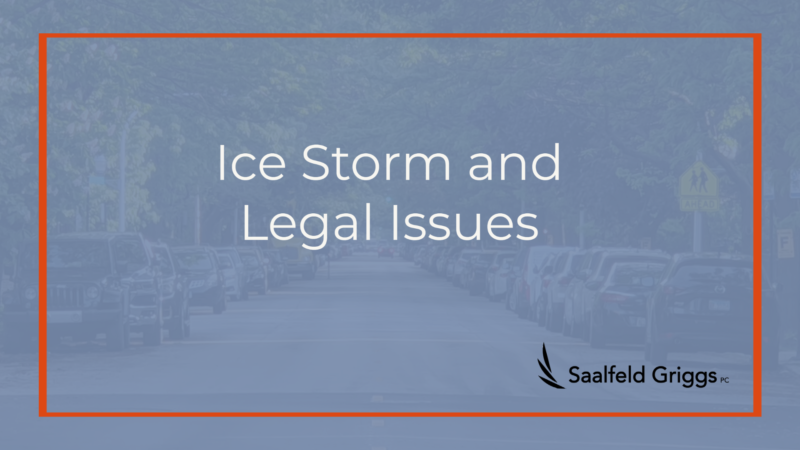by Alan Sorem, Partner, Real Estate and Land Use Practice Group
If a tree branch falls in my neighborhood, everyone has an opinion. Tree lovers express unconditional confidence that they know that a tree hanging precariously over a house can be saved. Neighbors whose homes and fences have been damaged express frustration at their bad luck and property loss. Trees are important to us in Oregon, and not surprisingly, when trees are harmed or harm our home, people have strong feelings and opinions.
The recent ice storm was a historic event affecting hundreds of thousands of Oregonians. As we restore power, clean up, and get back to work, many of us are asking what to do about the damage from fallen trees and limbs and what can be done to prevent future damage. Cutting down trees in Oregon creates a host of legal questions. Here are a few comments about the law of cutting down trees in an urban environment to consider before taking any action.
Check your local code
Most cities in Oregon have regulations regarding the removal of trees within the city limits. Salem and Silverton are notable examples in the Willamette Valley as having very restrictive regulations on tree removal. Generally, white oaks cannot be removed without a permit; however, emergency legislation may be applicable. The City of Salem is not requiring a permit for the removal of a City tree that fell on the owner’s property or to remove or prune a City tree when the City Urban Forester has determined it is structurally unsound and there is an imminent threat of harm with their written approval. This is in effect until March 15, 2021. Check with your contractor and review city updates before taking any actions.
Timber trespass
To borrow a phrase, you can pick your neighbor, and you can cut down your own tree, but you cannot cut down your neighbor’s tree. Oregon’s timber trespass laws protect tree owners. ORS 105.810. The policy purpose for these laws was to provide a strong penalty against the logging of another’s timber. Repayment for the damage incurred is not enough of a deterrent to prevent unauthorized logging, so Oregon provides for mandatory attorney fees and treble (three-times the value of the lost tree) damages if someone cuts down a tree or shrub (yes, shrubs are protected). Know your boundary lines and do not cut down your neighbor’s tree.
Negligence
Under a general negligence theory, property owners may be liable for hazardous trees on their property that injure persons or property. See Slogowski v. Lyness, 324 Or 436 (1996) (discussing the elements of negligence for tree hazards). For liability to arise under negligence, there must be a duty on the landowner to prevent foreseeable risks of harm, the owner must have breached that duty, and the breach must have caused the injury. Duty can arise from actual knowledge of the risk of harm or when there was a duty to inspect. With trees, there may be a duty to inspect to discover hazards, which will depend on the characteristics of the tree and property. See Taylor v. Olsen, 282 Or 343 (1978). Liability for damage resulting from fallen trees is very fact specific and each situation should be evaluated individually based on the circumstances to determine liability.
Use care and caution when responding to tree-related issues. Resolving these problems can create unexpected problems and liabilities. Good luck and be safe.
Alan M. Sorem is a partner in the Real Estate and Land Use Practice Group. The information in this article is not intended to provide legal advice. For professional consultation, please contact Alan at Saalfeld Griggs PC. 503.399.1070. © 2020 Saalfeld Griggs PC


